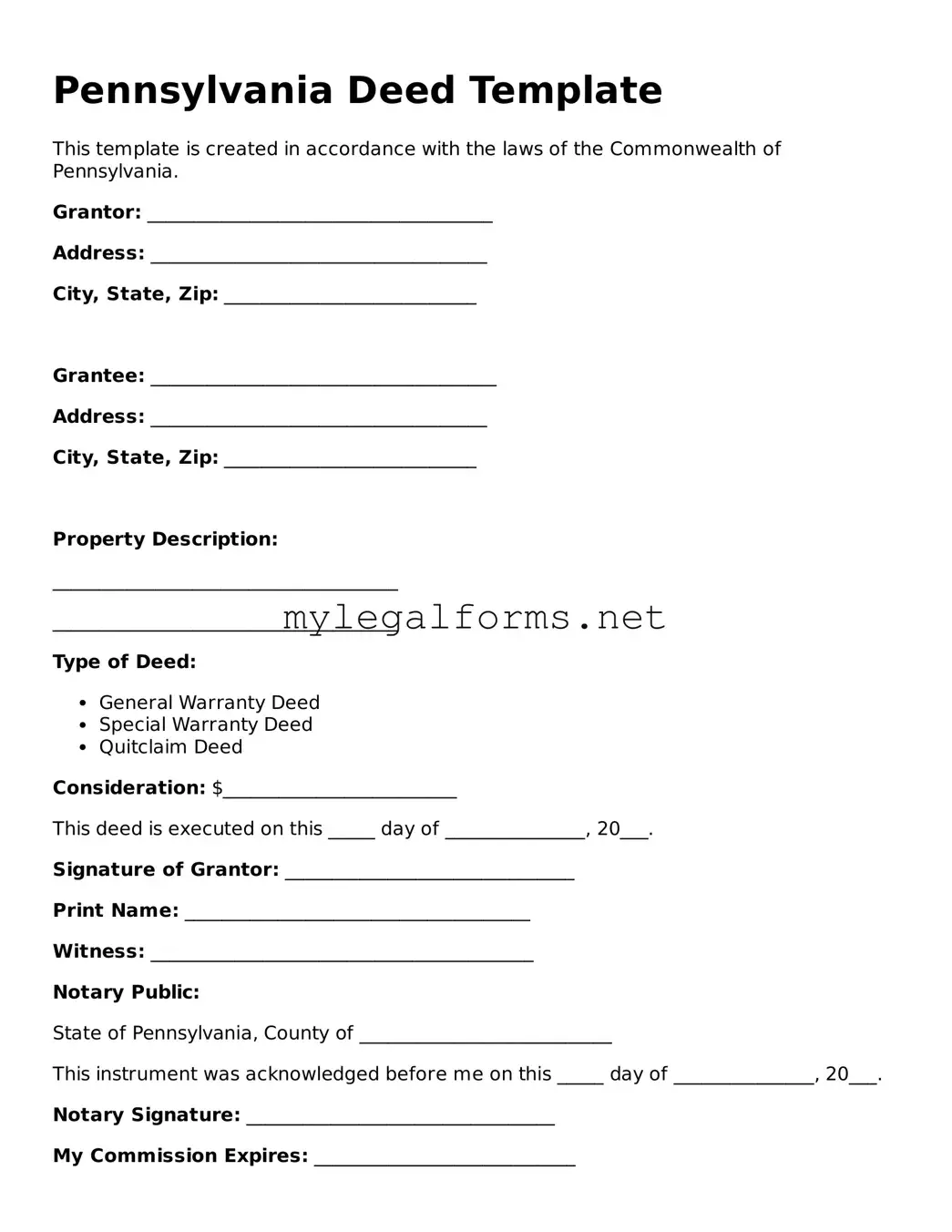Pennsylvania Deed Template
This template is created in accordance with the laws of the Commonwealth of Pennsylvania.
Grantor: _____________________________________
Address: ____________________________________
City, State, Zip: ___________________________
Grantee: _____________________________________
Address: ____________________________________
City, State, Zip: ___________________________
Property Description:
_____________________________________
_____________________________________
Type of Deed:
- General Warranty Deed
- Special Warranty Deed
- Quitclaim Deed
Consideration: $_________________________
This deed is executed on this _____ day of _______________, 20___.
Signature of Grantor: _______________________________
Print Name: _____________________________________
Witness: _________________________________________
Notary Public:
State of Pennsylvania, County of ___________________________
This instrument was acknowledged before me on this _____ day of _______________, 20___.
Notary Signature: _________________________________
My Commission Expires: ____________________________
